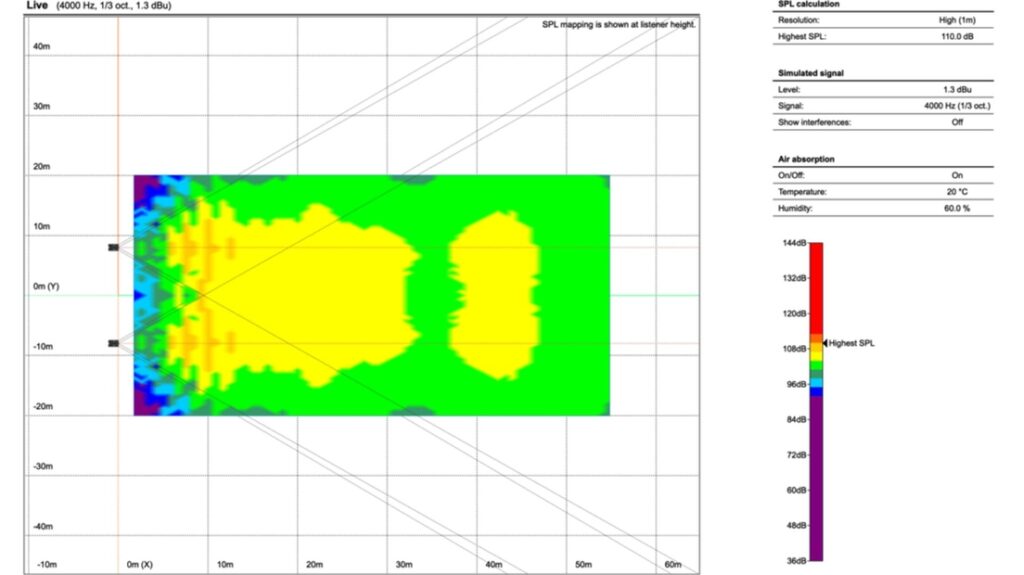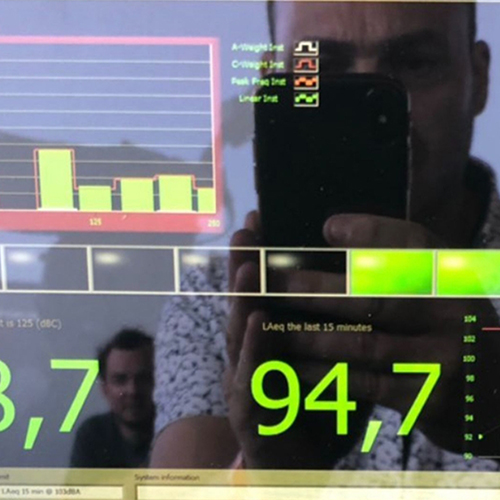
How does a sound engineer create the best concert experience?
If so many people are wearing earplugs at a concert, can’t or shouldn’t the volume just be turned down? From the Government, at least, it should not. In fact, the allowable sound volume will not be reduced from 103 to 100 decibels (dB). But how does an audio engineer himself look at this? Is harder also better? And how do you make sure people front and back get everything? We asked Mike Manders.
Manders makes sound designs for concert halls and stages, at Utrecht-based Amptec. He also mixes sound at concerts, as Suzan and Freek’s regular sound engineer. “I read that the measure was removed, and then I read the word perception a number of times.” A lower volume need not be at the expense of that at all, according to Manders. “I think people have no idea how loud 100 dB is. That’s absurdly loud. Of course it depends a little bit on the style of music, but at Rammstein in Groningen they are allowed up to 103 dB. That’s really loud.”
That question about earplugs and whether the volume shouldn’t be turned down then, Mike understands. “I think that can be done, if the distribution of sound is right,” he said. But the hardest part, he explains, is knowing when it’s enough. “It’s easy to just turn up the volume then.” Yet this also has drawbacks.
“Suppose 40 percent wear earplugs, then 40 percent of the audience doesn’t hear what we mean. I understand why they wear them, and it’s good that the audience is aware of it. But my goal is to get people to listen without earplugs.”
So that distribution of sound is very important. “I try to achieve that the margin in the volume is a maximum of 6 decibels no matter where I stand.” That means that from his mixing console, where the sound is average, the spots near the stage hear up to 3dB louder music, and in the back up to 3dB softer. That volume is all measured by spot. Below you can see how that is mapped. Note that these are maximum sound levels achievable with a specific sound system.

The map above visualizes the sound volume at a festival site. Orange is 110 dB, yellow is 107 dB, and green is 104 dB. © Mike Manders
Is the goal to eventually get that margin so small that everyone hears the music equally loud? “No, definitely not. 6 dB is good, because if you are at the front you also want to hear it louder. And if you’re chatting with your neighbor at the bar in the back, you don’t want the sound to be equally loud there. Then it’s not right.”
Whereas the discussion was about lowering from 103 dB to 100 dB, Manders always mixes the volume of concerts between 92 and 94 dB. “That’s a lot less loud than a lot of my colleagues.” And that’s not just easier because the concerts he mixes are not rock or metal. “At Suzan & Freek, the audience sings along very loudly. And with a beer on, and earplugs in, even louder.” Then the audience sometimes drowns out the music. But turning it up is not a solution either.

Image : Mike Manders’ dB meter during the concert at Concert at Sea, which averaged 94.7 dB.
© Mike Manders
“That just makes them sing louder. The trick for me then is to not turn it up, so yeah, it’s definitely a matter of self-control.” Furthermore, volume is not the same as quality, Manders believes. “Two things are important to me: the first is that everyone can understand from front to back what Suzan and Freek are singing, and that everyone feels the bass.” That intelligibility is in the volume of one specific frequency. If it is audible everywhere, you should be able to understand them.
The bass measures Manders exactly the other way around. Instead of his screen telling how intelligible it is to the audience, the audience tells him what they feel. What does he see that by? “If people dance. When people feel the low notes, they start dancing. So everyone should dance.” By the way, they are also those frequencies that you can sometimes hear from miles away.
Yet that is not nearly enough to ensure the quality of the music. After all, each location brings its own challenges. For example, intelligibility quickly becomes worse if the sound is reflected a lot, causing it to reverberate. In the ArenA, for example, this is a big problem. “There it is really bad. It doesn’t get any worse than there.”
Outside, that reflection can also be a problem. For example, to what extent something is sold out can make a lot of difference. “In a square, sound reflects on the paving stones. The best acoustic material there is is the human body. So if that square is full, that makes my work a lot easier. Sand and grass is also fine, like on Central Park in Utrecht two weeks ago.” Mike Manders was at Concert at Sea just last weekend. “There, wind is still a thing. The sound just blows away then. Fortunately, this time it was windless.”
Finally, we also need to take a look at ourselves in the mirror. After all, we, the Dutch audience, do not make it easy for the sound people and artists either. “Foreign bands call it the Dutch Disease. That’s a real problem.” So what do we do? We natter too much, and especially while the concert is going on. And yes, we really do that more than Spanish, American or British concertgoers.
For Mike Manders, that means that there is a certain amount of noise coming out of the room continuously, which must be drowned out. But for (foreign) artists, sometimes it is almost as if the audience is not paying attention to them. Until an experienced colleague offers the barely reassuring explanation, “It’s not you, it’s the Dutch Disease.”